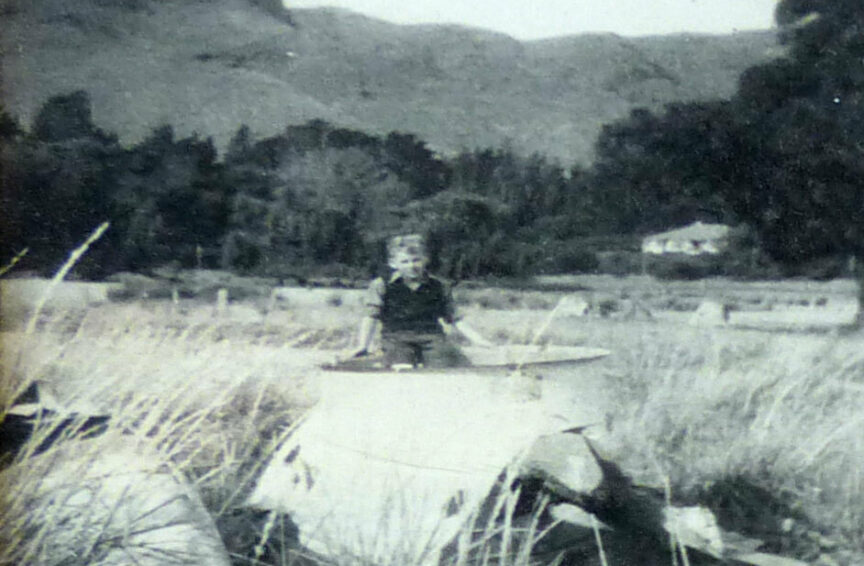PO Box 95
Lyttelton 8841
Te Ūaka recognises Te Hapū o Ngāti Wheke as Mana Whenua and Mana Moana for Te Whakaraupō / Lyttelton Harbour.
The last Royal Navy Commander of the Australasia Station
The British Royal Navy (RN) was key to the founding of the empire’s Australasian colonies – from Captain Cook’s 1769 circumnavigation of Nieuw Zeeland, to Captain Philip’s 1788 founding of the Sydney Cove penal colony, and Captain Hobson’s 1840 declaration of British sovereignty over New Zealand. From the start, the RN was the sole guarantor of naval security in Australasian waters, conducted extensive hydrographic surveys, and also served as the colonies’ law enforcement across a wide area of the South Pacific. RN commanders, being subordinate only to the British Admiralty, were the equals of colonial governors. For the colonial settlers, the RN was also a strong and visible connection to the motherland, an ‘Imperial presence’, especially as the crews of RN ships were generally born in Britain where the RN naval academies were located. A New Zealand citizens militia coastguard was authorised under the Militia Act of 1858 – including the Lyttelton Naval Artillery Volunteers, or ‘the Navals’ – and were responsible for manning the colony’s coastal gunnery emplacements, but these colonial auxiliaries were never part of the RN.
In 1859 the empire’s Pacific presence was strengthened even further with the establishment of the RN Australia Station at Sydney Harbour’s Farm Cove, often referred to as the ‘Australasia Station’ by New Zealand writers of the day. The Station was assigned RN warships to form the Australasian Squadron responsible for securing the Crown’s colonial interests in the South Pacific theatre, from the equator to the Antarctic. Half a century later, in 1910, the Admiralty decided to disband the Station and hand it over to the newly formed Australian Commonwealth’s Royal Australian Navy. Vice-Admiral Sir George Fowler King-Hall, then 60 and nearing retirement, was chosen to be the last RN Commander in Chief of the Australasia Station. As C-in-C, the Vice-Admiral represented British imperial naval power and was second in authority only to the King’s viceroy, the Governor General. Known as an affable chap, King-Hall was quite well received by crew and colonials alike, although his Presbyterian teetotalism did cause some consternation. In November 1911, he set sail in the flagship of the Australasian Squadron, HMS Powerful, to review the Crown’s naval facilities across the Australian and New Zealand Dominions.
After arriving in Auckland on 20 November 1911, HMS Powerful made for Wellington on the 28th and on to Ōhinehou Lyttelton by 5 December. Launched in 1895, she was a first-class protected cruiser of 14,100 gross tons driven by 25,000 horse-power, coal-fired steam engines, and sporting 18 guns. Reportedly the largest cruiser ever launched at the time, this 1911 cruise to Lyttelton was to be her last port of call in New Zealand before returning to the UK as a RN training ship. On anchoring in Whakaraupō Lyttelton Harbour, at around 10:30 AM the Mayor of Christchurch Mr J.J. Dougall, with the Mayor of Lyttelton Mr M.J. Miller and officials of the Lyttelton Harbour Board, went aboard to formally welcome his Excellency. At 2 PM the C-in-C arrived on the Lyttelton wharf accompanied by his Flag Captain (later Admiral) Edward F. Bruen and officers, being greeted by the Harbourmaster, Captain A.H. Thorpe.
The Vice-Admiral was in his finest dress uniform as he was on his way to meet with the New Zealand Governor Lord Islington and Christchurch dignitaries at the Rhodes’ residence ‘Te Koraha’ in Merivale. However, while in port King-Hall took time out to tour Captain Scott’s British Antarctic Expedition ship Terra Nova that was taking on supplies for the 1912 return journey, and was welcomed on board by RN Lieutenant Harry Pennell. It had also been hoped that the C-in-C, as Director of the British and Foreign Sailors Society, would be present for the laying of the foundation stone for the Lyttelton Seamen’s Institute at 2 Gladstone Quay on 11 December. Unfortunately, after two days of formalities, duty called and Vice-Admiral King-Hall left Lyttelton on HMS Powerful bound for Sydney, late on 6 December 1911. He did, however, pen a letter of congratulation that was read out at the ceremony officiated by Lord Islington himself. Some eight decades later, this same Seamen’s Institute would become the Lyttelton Museum.
Vice-Admiral King-Hall was promoted to Admiral in 1912, and with the handover of the command of the Australasia Station to the RAN Rear Admiral Patey on 13 October 1913, he returned to the UK. After an audience with the King at Buckingham Palace, Admiral Sir George King-Hall retired with honours and a healthy pension. Back in the Dominions, the New Zealand Naval Defence Act 1913 had created the New Zealand Naval Forces as a Division of the British Royal Navy initially under the command of its China Station and covering the SW Pacific. It was not until 1 October 1941, with the creation of the Royal New Zealand Navy (RNZN), that New Zealand finally, albeit reluctantly, cut its old colonial ties with the British Royal Navy. Prime Minister Peter Fraser, while accepting the change in command, commented that "now was not the time to break away from the old country".
See also J. Bach, ‘The Royal Navy in the South West Pacific: the Australia Station 1859-1913’ – https://www.jstor.org/stable/4...

